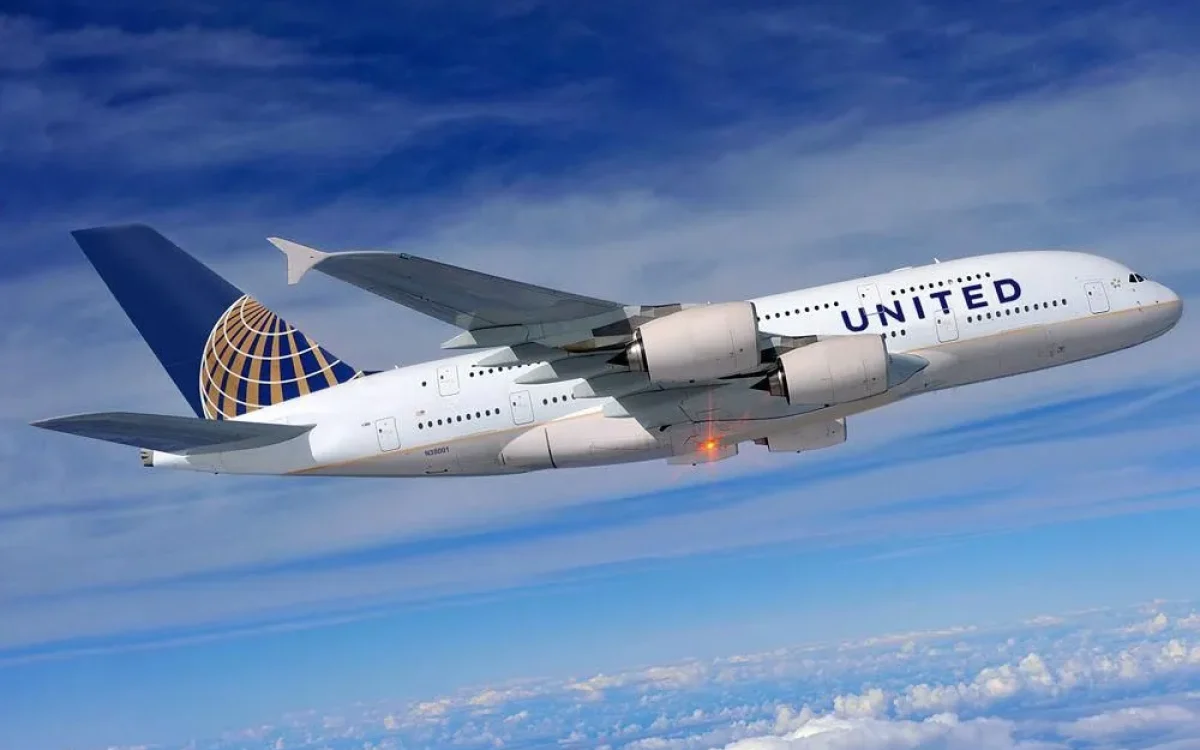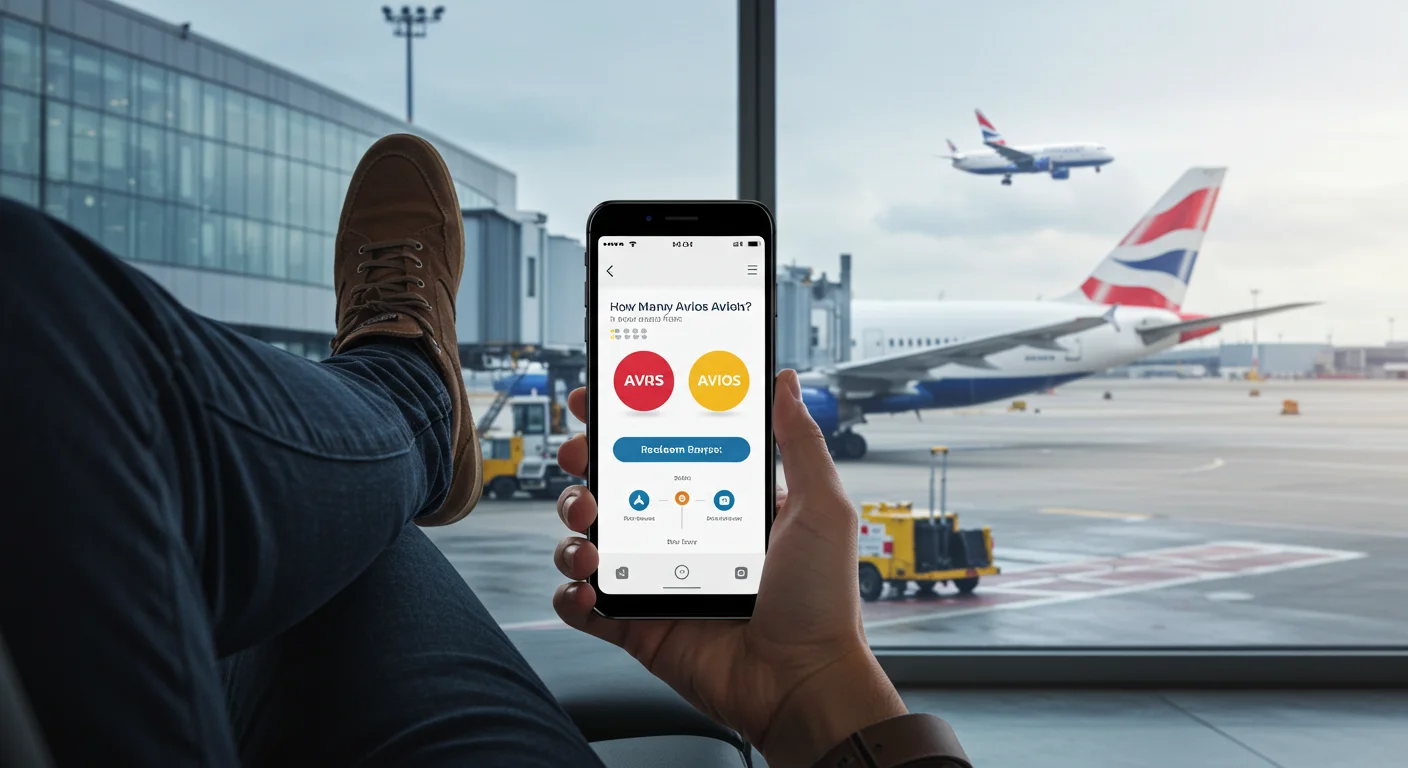How Advanced Technology and Swift Action Prevented a Catastrophic Crisis Mid-Flight
United Airlines Flight UA770 Emergency Diversion Aviation emergencies capture our attention like few other events can. When United Airlines flight UA770 from Barcelona declared an emergency and diverted to London, it became more than just another news story—it transformed into a powerful demonstration of how modern aviation safety systems, skilled crew training, and Travel To Tourism infrastructure work together to protect passengers worldwide.
The incident involving United Airlines Flight UA770 serves as a compelling case study in aviation safety, emergency response protocols, and the critical importance of maintaining robust safety standards across 375 airports worldwide that handle millions of passengers daily. This comprehensive analysis examines every aspect of this emergency diversion, from the initial crisis to the successful resolution, offering valuable insights for both aviation professionals and concerned travelers.
The Incident: What Happened During Flight UA770
On May 28, 2025, what began as a routine transatlantic journey quickly evolved into an aviation emergency that would test every system, protocol, and individual involved. United Airlines Flight UA770, a Boeing 787-9 Dreamliner traveling from Barcelona (BCN) to Chicago, found itself in an unexpected situation that required immediate action.
The flight, operated by a state-of-the-art Boeing 787-9 with registration N26902, departed Barcelona Airport approximately 1.5 hours before the emergency declaration. According to multiple aviation tracking sources, the pilots squawked 7700 (general emergency) and decided to go to London Heathrow, initiating a series of coordinated emergency procedures that would ultimately ensure passenger safety.
Understanding Emergency Squawk Codes and Their Significance
The aviation industry relies on specific transponder codes to communicate emergency situations rapidly and effectively. When Flight UA770’s crew transmitted squawk code 7700, they were following established international aviation protocols that immediately alert air traffic control systems worldwide to a general emergency situation.
Emergency squawk codes serve multiple critical functions:
- Immediate Priority: Air traffic controllers instantly recognize the emergency status and provide immediate assistance
- Global Communication: The code alerts all relevant aviation authorities across international boundaries
- Resource Mobilization: Emergency services at potential diversion airports begin preparation procedures
- Traffic Management: Other aircraft in the vicinity receive priority routing adjustments
The decision to declare an emergency and divert to London Heathrow Airport demonstrates the crew’s adherence to safety-first principles that govern all United Airlines operations. This airline, which serves passengers across domestic flights and international routes, maintains stringent safety protocols that prioritize passenger welfare above all other considerations.
The Role of Modern Aviation Technology
The Dreamliner used for Flight UA770 (registration N26902) is designed for emergency resilience. It uses fly-by-wire controls, redundant systems, and constant health monitoring to manage high-stress scenarios like this one. The Boeing 787-9 represents the pinnacle of modern aviation technology, incorporating multiple layers of safety systems that work together to prevent catastrophic failures.
Advanced Safety Features of the Boeing 787-9
The aircraft involved in the UA770 emergency diversion included several technological innovations that contributed to the successful outcome:
Flight Management Systems: Three independent flight computers with automatic failover ensure that even if one system fails, backup systems maintain aircraft control and navigation capabilities.
Real-Time Monitoring: Advanced sensors throughout the aircraft continuously monitor engine performance, hydraulic systems, electrical systems, and structural integrity. This constant surveillance allows crews to identify potential issues before they become critical problems.
Communication Systems: Multiple redundant communication channels ensure that flight crews can maintain contact with air traffic control, airline operations centers, and emergency services throughout any crisis situation.
Navigation Technology: GPS-based navigation systems, combined with traditional radio navigation aids, provide multiple positioning references that ensure accurate navigation even during emergency situations.
Why London Heathrow Was the Optimal Diversion Airport
The crew’s decision to divert to London Heathrow Airport rather than returning to Barcelona or continuing to Chicago reflects sophisticated decision-making based on multiple factors:
Proximity and Fuel Considerations: London Heathrow provided the nearest suitable airport with the necessary facilities to handle a wide-body aircraft emergency landing safely.
Infrastructure Capabilities: Heathrow Airport maintains extensive emergency response capabilities, including specialized firefighting equipment, medical facilities, and maintenance support specifically designed for large commercial aircraft.
United Airlines Operations: United Airlines’ established operations at Heathrow facilitated efficient handling of passengers and the aircraft, ensuring a seamless response to the emergency diversion. The airline’s existing infrastructure at Heathrow included ground handling services, passenger assistance capabilities, and maintenance support.
Weather Conditions: London’s weather conditions at the time of the diversion were suitable for emergency landing procedures, with adequate visibility and manageable wind conditions.
The Human Factor: Crew Training and Response
While technology plays a crucial role in aviation safety, the human element remains paramount in emergency situations. The flight crew’s response to the UA770 emergency demonstrates the effectiveness of comprehensive training programs that United Airlines implements for all its personnel.
Pilot Training and Certification
Commercial airline pilots undergo rigorous training programs that prepare them for various emergency scenarios:
Initial Training: Pilots complete extensive ground school instruction covering aircraft systems, emergency procedures, and decision-making protocols before ever entering a cockpit.
Simulator Training: Regular simulator sessions allow pilots to practice emergency procedures in a controlled environment, including scenarios similar to the UA770 situation.
Recurrent Training: Airlines require periodic retraining and evaluation to ensure that pilots maintain proficiency in emergency procedures throughout their careers.
Crew Resource Management: Modern aviation training emphasizes teamwork, communication, and decision-making skills that enable flight crews to work effectively under pressure.
Cabin Crew Emergency Response
Flight attendants also play a critical role in emergency situations, receiving specialized training in:
Passenger Communication: Keeping passengers informed and calm during emergency situations while providing clear, actionable instructions.
Emergency Equipment: Proficiency in operating all safety equipment, including oxygen systems, emergency slides, and firefighting equipment.
Medical Response: Basic medical training enables cabin crew to provide assistance to passengers who may experience medical emergencies during flight diversions.
Evacuation Procedures: Comprehensive training in aircraft evacuation procedures ensures that cabin crew can efficiently guide passengers to safety if required.
The Broader Impact on Aviation Safety
The UA770 emergency diversion contributes to the broader aviation safety ecosystem in several important ways:
Safety Data Collection and Analysis
Every aviation incident, regardless of outcome, generates valuable safety data that contributes to industry-wide improvements:
Incident Reporting: Detailed reports documenting the circumstances, crew actions, and outcomes of emergency situations help identify potential safety improvements.
Trend Analysis: Aviation safety organizations analyze patterns in emergency diversions to identify common factors and develop preventive measures.
Technology Improvements: Data from incidents like UA770 informs the development of new safety technologies and procedural improvements.
Training Enhancements: Real-world scenarios provide valuable case studies for improving pilot and crew training programs.
Regulatory Oversight and Compliance
Aviation authorities worldwide maintain strict oversight of airline operations, ensuring that carriers comply with safety regulations and maintain high operational standards:
Federal Aviation Administration (FAA): The FAA oversees United Airlines’ operations and investigates significant incidents to ensure compliance with safety regulations.
International Civil Aviation Organization (ICAO): This UN agency establishes international aviation safety standards that govern emergency procedures and aircraft operations worldwide.
European Aviation Safety Agency (EASA): EASA regulations influenced the emergency response procedures used during the UA770 diversion to London Heathrow.
Passenger Experience and Support During Emergency Diversions
While the technical aspects of emergency diversions focus on safety and aircraft systems, the passenger experience remains a crucial consideration for airlines and aviation authorities.
Immediate Passenger Care
During the UA770 emergency diversion, United Airlines implemented comprehensive passenger support procedures:
Communication: Regular updates about the situation, expected timeline, and passenger rights help reduce anxiety and maintain passenger confidence.
Comfort Services: Providing refreshments, blankets, and other comfort items during extended delays demonstrates airline commitment to passenger welfare.
Medical Support: Access to medical personnel and facilities ensures that passengers with health concerns receive appropriate care during emergency situations.
Ground Transportation: Coordination with ground transportation services helps passengers reach their final destinations or suitable accommodations.
Long-Term Passenger Support
Emergency diversions often require extensive follow-up support for affected passengers:
Rebooking Services: Airlines must provide alternative travel arrangements for passengers whose journeys were disrupted by emergency diversions.
Accommodation: When overnight stays become necessary, airlines typically provide hotel accommodations and meal vouchers for affected passengers.
Compensation: Depending on the circumstances and applicable regulations, passengers may be entitled to compensation for delays and inconvenience.
Customer Service: Dedicated customer service teams handle passenger inquiries and concerns following emergency diversions.
Economic Impact of Aviation Emergencies
Emergency diversions like UA770 have significant economic implications for airlines, airports, and the broader aviation industry:
Direct Costs to Airlines
Fuel Expenses: Unplanned diversions require additional fuel consumption and may necessitate aircraft refueling at diversion airports.
Airport Fees: Airlines must pay landing fees, parking charges, and other airport-related expenses at diversion airports.
Passenger Compensation: Airlines often incur costs related to passenger meals, accommodations, and rebooking expenses following emergency diversions.
Crew Costs: Flight and cabin crew may require additional duty time, overtime pay, and accommodation expenses during extended diversions.
Operational Disruptions
Schedule Delays: Emergency diversions can create cascading delays throughout an airline’s network, affecting multiple flights and thousands of passengers.
Aircraft Utilization: Diverted aircraft may be unavailable for subsequent flights until technical issues are resolved and aircraft are repositioned.
Crew Scheduling: Emergency diversions can disrupt crew scheduling, potentially requiring reserve crews or schedule adjustments.
Maintenance Resources: Unscheduled maintenance requirements may strain airline maintenance departments and inventory systems.
Lessons Learned and Future Improvements
The UA770 emergency diversion provides valuable insights for improving aviation safety and emergency response procedures:
Technology Enhancements
Predictive Maintenance: Advanced analytics and machine learning systems can help predict potential mechanical issues before they result in emergency situations.
Enhanced Communication: Improved satellite communication systems enable better coordination between flight crews, air traffic control, and airline operations centers.
Real-Time Monitoring: Advanced sensor technologies provide more detailed information about aircraft systems, enabling more informed decision-making during emergencies.
Automated Systems: Artificial intelligence and automated systems can assist flight crews in emergency situations by providing real-time recommendations and system management.
Training and Procedures
Scenario-Based Training: Incorporating real-world scenarios like UA770 into training programs helps prepare crews for similar situations.
Cross-Training: Enhanced training programs that involve multiple crew members working together during emergency situations improve overall response effectiveness.
Communication Skills: Improved training in passenger communication and crisis management helps crews maintain calm and order during emergency situations.
Decision-Making: Advanced training in rapid decision-making under pressure helps crews respond more effectively to unexpected situations.
Global Aviation Safety Standards
The UA770 incident highlights the importance of international cooperation in maintaining aviation safety standards:
International Coordination
Information Sharing: Aviation authorities worldwide share safety information and best practices to improve global aviation safety.
Standardized Procedures: International aviation organizations work to establish consistent emergency procedures across different countries and airlines.
Technology Standards: Global standards for aircraft equipment and safety systems ensure compatibility and effectiveness across international borders.
Training Requirements: International training standards help ensure that aviation personnel maintain consistent competency levels worldwide.
Regulatory Harmonization
Safety Regulations: International efforts to harmonize safety regulations help ensure consistent safety standards across different jurisdictions.
Oversight Procedures: Standardized oversight procedures enable aviation authorities to monitor airline safety performance effectively.
Incident Investigation: International protocols for investigating aviation incidents help identify safety improvements and prevent future occurrences.
Technology Integration: Coordinated efforts to integrate new safety technologies ensure that improvements benefit the entire global aviation system.
The Future of Aviation Emergency Response
As aviation technology continues to evolve, emergency response procedures and capabilities will likely see significant improvements:
Emerging Technologies
Artificial Intelligence: AI systems may provide real-time analysis of emergency situations and recommend optimal response strategies.
Enhanced Sensors: New sensor technologies will provide more detailed information about aircraft systems and environmental conditions.
Improved Communication: Advanced communication systems will enable better coordination between all parties involved in emergency response.
Predictive Analytics: Data analytics systems will help predict potential emergency situations and enable proactive preventive measures.
Procedural Improvements
Automated Response: Automated systems may handle routine emergency response tasks, allowing human operators to focus on critical decision-making.
Enhanced Training: Virtual reality and simulation technologies will provide more realistic and comprehensive emergency training experiences.
Improved Coordination: Better coordination systems will enable more effective communication between airlines, airports, and emergency services.
Passenger Support: Enhanced passenger support systems will provide better assistance and communication during emergency situations.
Frequently Asked Questions
What exactly happened during United Airlines Flight UA770’s emergency diversion?
United Airlines flight UA770 from Barcelona declared an emergency and diverted to London after the crew encountered a mechanical issue during the flight. The pilots activated the emergency transponder code 7700 and successfully diverted to London Heathrow Airport, where the aircraft landed safely with all passengers and crew unharmed.
How common are emergency diversions in commercial aviation?
Emergency diversions occur relatively infrequently in commercial aviation, typically happening in less than 1% of all flights. However, they represent a crucial safety mechanism that allows flight crews to respond appropriately to unexpected situations while maintaining the highest possible safety standards.
What safety measures are in place to handle emergency diversions?
Modern aircraft like the Boeing 787-9 involved in the UA770 incident include multiple redundant safety systems, advanced monitoring technology, and comprehensive emergency procedures. Airlines also maintain extensive crew training programs and coordinate with airports and air traffic control to ensure effective emergency response.
How does United Airlines support passengers during emergency diversions?
United Airlines provides comprehensive passenger support during emergency diversions, including regular communication updates, comfort services, rebooking assistance, and accommodation arrangements when necessary. The airline’s established operations at major airports worldwide, including its presence at 375 airports worldwide, facilitate effective passenger support.
What role does technology play in aviation emergency response?
Advanced technology plays a crucial role in aviation emergency response through real-time monitoring systems, redundant flight controls, sophisticated communication networks, and predictive maintenance capabilities. These technologies help prevent emergencies and enable effective response when situations arise.
How do emergency diversions affect airline operations?
Emergency diversions can create significant operational disruptions, including schedule delays, increased costs, and resource allocation challenges. However, airlines prioritize safety above all other considerations and maintain comprehensive procedures to minimize passenger inconvenience while ensuring safety.
Conclusion: Aviation Safety Excellence in Action
The United Airlines Flight UA770 emergency diversion represents a remarkable success story in modern aviation safety. Through the seamless integration of advanced technology, skilled personnel, and robust emergency procedures, what could have been a catastrophic situation became a textbook example of how the aviation industry protects passengers and crew.
This incident reinforces the critical importance of continuous investment in aviation safety technology, comprehensive crew training, and international cooperation in maintaining the highest safety standards. As United Airlines continues to operate domestic flights and international routes connecting 375 airports worldwide, incidents like UA770 provide valuable learning opportunities that contribute to the ongoing improvement of aviation safety.
The success of the UA770 emergency diversion should instill confidence in travelers while highlighting the dedication of aviation professionals who work tirelessly to ensure passenger safety. From the flight crew who made critical decisions under pressure to the air traffic controllers who coordinated the emergency response, everyone involved demonstrated the professionalism and competence that make modern aviation remarkably safe.
As the aviation industry continues to evolve with new technologies and improved procedures, the lessons learned from UA770 will contribute to even safer travel experiences for millions of passengers worldwide. The incident serves as a powerful reminder that in aviation, safety always comes first, and the systems in place to protect passengers are both sophisticated and effective.
Ready to learn more about aviation safety and emergency procedures? Share your thoughts about this incident in the comments below, and explore our related articles on aviation safety technology and passenger rights during flight disruptions. Your engagement helps us continue providing valuable insights into the fascinating world of commercial aviation.







